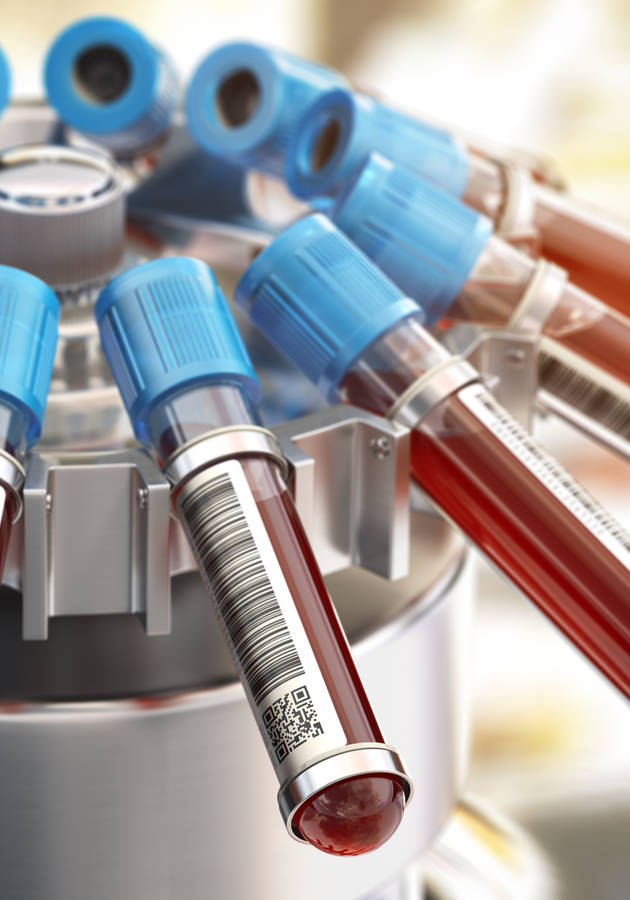Just like all the best true stories out there, this one’s stranger than fiction as well. Set in the Silicon Valley – the place where future is manufactured – it features a charismatic female turtleneck-wearing protagonist, a bunch of hoodwinked FoMO-fraught investors (an acronym to the “Fear of Missing Out”), and a revolutionary medical device valued at no less than $9 billion – that is impossible to make.
In “Bad Blood,” acclaimed French American investigative journalist John Carreyrou unveils the unimaginably dark secrets of Theranos – until recently, one of the breakthrough technology corporations of the past decade. The author also paints a damning portrait of the company’s founder, Elizabeth Holmes – a Steve Jobs wannabe – which Forbes named the youngest and wealthiest self-made billionaire in 2015, only to earn a place the following year in Fortune’s infamous list of the “world’s most disappointing leaders.”
So, get ready to hear “a cautionary tale of what happens when Silicon Valley’s ‘fake it till you make it’ mentality meets public health,” and prepare to discover how and why John Carreyrou exposed a multibillion-dollar blood-testing company as “a massive fraud.”
Elizabeth Holmes’ brilliant idea
Elizabeth Holmes inherited from her mother a phobia of needles: apparently, Noel Holmes would faint at the mere sight of a syringe. Possibly because of this, at the tender age of 19, Holmes came up with a wonderful idea: a wearable patch that could draw very little blood after pricking by no more than a few microneedles.
Holmes didn’t stop there: in her mind, the patch was supposed to be cheap and quite effective, optimized to test one’s blood for hundreds of ailments, thus allowing ordinary people to predict their diagnoses early – and independently from any doctor. So, we’re talking about a revolutionary device here – one that could effectively democratize the world of medicine, giving poor Americans (finally!) access to cheap medical care.
Holmes enjoyed highlighting these few facts during her interviews with the prospective engineers. This imagined device was supposed to usher humanity into an era in which drugs would be minutely tailored to individuals thanks to permanent blood-monitoring technology. One hundred million Americans die each year from adverse drug reactions. Now, she had envisioned technology that was capable of eliminating all those deaths.
The problem the engineers immediately realized? Such a device was all but impossible to build, for the simple reason that such a small amount of blood isn’t enough to do most blood tests. Even though many medical professionals had told Holmes this before she made even a single step toward making this dream a reality – she persisted. And in 2004, she found someone who found her vision and enthusiasm contagious: Shaunak Roy, one of Holmes’ peers at Stanford University. That same year, the two founded Theranos.
Reimagining the device
As the money started to flow in, Shaunak started realizing that Holmes’ little patch would never be able to do all the things Elizabeth wanted it to do. In an attempt to make the patch concept more feasible, he convinced her to trim it down to just the diagnostic part – but even that was incredibly challenging. So, eventually, the founders of Theranos settled for a compromise: a cartridge-and-reader system blending the fields of microfluidics and biochemistry.
In Carreyrou’s description, the system was supposed to work in a way that “the patient would prick her finger to draw a small sample of blood and place it in a cartridge that looked like a thick credit card. The cartridge would slot into a bigger machine called a reader. Pumps inside the reader would push the blood through tiny channels in the cartridge and into little wells coated with proteins known as antibodies. On its way to the wells, a filter would separate the blood’s solid elements, its red and white blood cells from the plasma and let only the plasma through. When the plasma came into contact with the antibodies, a chemical reaction would produce a signal that would be ‘read’ by the reader and translated into a result.”
Holmes and Roy believed that this device – dubbed the Edison – could perform tests for 240 different ailments. However, as you might have guessed by now, even this miracle credit-card-sized blood-testing machine was just that: a miracle. In the worst sense of that word. Meaning: it was much more part of Elizabeth Holmes’ fantasies than it was part of reality.
As it turned out, the blood sample the machine took was just too small to be used in more than a few tests, let alone 240! Timothy Hamill, vice chairman of the University of California Department of Laboratory Medicine, knew this beforehand, claiming that 240 separate tests on a single drop of blood would never be possible because of the nature of the tested substance, blood, and not because of the tests.
However, nobody seemed to believe Hamill; on the other hand, everybody was more than happy to believe the endlessly charismatic wunderkind that was Elizabeth Holmes.
Elizabeth Holmes, a sociopath
A brief psychological sketch of Holmes’ character and personality is worth more than a brief digression here – but that’s all we can allow ourselves.
Daughter of Christian Rasmus Holmes IV – former vice president of Enron – ever since early childhood, Elizabeth Holmes was taught what most Americans routinely believe in: that the road to success starts with dreaming big. And she was magnificent when it comes to envisioning a better future for everybody: all her faults aside, it’s not like she didn’t have a great idea.
However, a great idea doesn’t make for a great product and, whatever all those movies and self-help books say, sometimes it’s much better to just give up even if the time seems less than appropriate. Especially if smart people all around you say that your vision can’t be translated into reality. Because, simply put, as great as they sound, some things are impossible.
And yet, Holmes, emulating the stubbornness of her idol, Steve Jobs, persevered. It didn’t help that everybody started comparing her to Jobs in her early 20s. She wanted to be his female version so bad, that she not only hired the same people and companies to help her, but she even dressed like him, black turtlenecks and all. Sounds a bit bizarre, right? In retrospect, it seems even aberrant.
Is Holmes a sociopath? Quite possibly, she is, since she precisely knew what she was doing, and she was always in control. “I’m fairly certain she didn’t initially set out to defraud investors and put patients in harm’s way when she dropped out of Stanford fifteen years ago,” writes Carreyrou. “By all accounts, she had a vision that she genuinely believed in and threw herself into realizing. But in her all-consuming quest to be the second coming of Steve Jobs amid the gold rush of the ‘unicorn’ boom, there came a point when she stopped listening to sound advice and began to cut corners. Her ambition was voracious and it brooked no interference. If there was collateral damage on her way to riches and fame, so be it.”
Lucrative deals and wellness centers
So, as far as Elizabeth Holmes was concerned, not being able to build the Edison wasn’t really a problem: she was too busy enjoying her fame to be burdened by such minor setbacks. Also, she was too busy emulating Jobs to attract gullible investors – and they seemed to be arriving at a world-record pace.
By 2014, helped by Oracle’s very own Larry Ellison and the ad agency famous for collaborating with Jobs and Apple (TBWA\Chiat\Day), Theranos had already made a couple of lucrative deals and reached a value of almost $9 billion. Everybody was preparing for a new age in modern medicine: Walgreens agreed to install Edisons in each of its over 8,000 branches, and Safeway’s CEO Steve Burd ordered the remodeling of more than half of his company’s 1,700 stores to make room for upscale spa-looking Theranos wellness centers with “deluxe carpeting, custom wood cabinetry, granite countertops, and flat-screen TVs.”
By this time, Holmes was so confident of her product that she started throwing away numbers and unsubstantiated claims by the minute. Like, for example, that Edison could print the blood test results in less than half an hour and that they would cover not just 240, but as much as 800 different ailments!
Investors are coming, employees are leaving
Now, why and how did all those investors buy this? The correct answer to that question would be – “oh, boy where should we start?” – followed by numerous excerpts from “Bad Blood.” The short answer looks like this:
- Because of the people in Theranos’ board: George Shultz, James Mattis, Henry Kissinger, William Perry, Sam Nunn, Gary Roughead.
- Because Theranos covered up all of Edison’s flaws systematically, testing the blood of angel investors and test-patients on third-party machines and presenting the results as originals.
- Because Theranos dodged Food and Drug Administration (FDA) inspections, incessantly claiming that the Edison was simply an information tool and wasn’t subject to FDA regulations.
- Because it cherry-picked for demonstrations only the tests that worked (it’s important to note that the Edison did work well in the case of 20 tests about 20% of the time).
- Because Theranos made its employees sign confidentiality agreements, which prevented them from talking even after resigning; some of them did, though – and, thanks to these whistle-blowers, the company was eventually exposed as a fraud.
- Because Holmes’ boyfriend, Ramesh “Sunny” Balwani, started filling the company’s empty chairs with Indian workers, dependent on their work visas – and, consequently, their shut mouths – to stay in the United States.
Finally, it was because of FoMO. To understand how this works, just imagine yourself in place of an investor offered by someone the opportunity of participating in a potentially revolutionary invention such as a cheap, carriable blood-testing machine. Already more than familiar with those stories about people turning down the Beatles or Queen and intelligent stockholders missing out on an opportunity to cash in on ideas such as the PC or Microsoft, it’d be only natural for you to think twice before opting out.
The executives of Safeway, for example, faced this quandary. They didn’t like many things about the project – least of all, Holmes’ boyfriend – and yet they were still hesitant to walk away from a possible partnership. “What if the Theranos technology did turn out to be game-changing?” – they wondered. They might spend the next decade regretting passing up on it. So, they didn’t.
The empress has no clothes
Safeway had already begun remodeling its stores, and Walgreens had started offering in-store blood tests at more than 40 locations when all hell broke loose. After interviewing over 150 people (including 60 former employees), Carreyrou exposed Theranos, Elizabeth Holmes, and Sunny Balwani as liars and falsifiers, and the company went bankrupt in 2018. Besides, it had to refund millions of dollars to American residents, such as those in Arizona, where more than a million people used the Edison to test themselves. Nobody knows how many of them suffered because of the false results; it is widely speculated that many may have even died due to wrong diagnoses.
As terrifying as this might sound, “Bad Blood” is not merely about Theranos, but about the primitive mindset of the Silicon Valley and the impossibility of applying it to such sensitive spheres of life as healthcare. A source of Carreyrou – a former high-ranking lab employee – summed up the unhealthy practices (pun unintended) of Silicon Valley startups with a nice analogy: “The way Theranos is operating is like trying to build a bus while you’re driving the bus. Someone is going to get killed.”
And even though the case of Theranos presents a powerful cautionary tale, the modus operandi of the Silicon Valley hasn’t changed one bit. For some reason, as Carreyrou concludes, “hyping your product to get funding while concealing your true progress and hoping that reality will eventually catch up to the hype continues to be tolerated in the tech industry.” Perhaps it shouldn’t be… Anymore? Or are we willing to sacrifice people’s lives to get another iPad or a social media network?
Final Notes
A national bestseller, “Bad Blood” was selected among the ten best books of 2018 by numerous publications – from The Wall Street Journal and The Washington Post to Time, NPR, and The New York Times reviews.
“The story is even crazier than I expected,” wrote Bill Gates upon reading it, “and I found myself unable to put it down once I started. This book has everything: elaborate scams, corporate intrigue, magazine cover stories, ruined family relationships, and the demise of a company once valued at nearly $10 billion.”
The only thing it doesn’t have? Boredom-inducing paragraph. “Bad Blood” doesn’t read like a thriller – it feels like watching one. Highly recommended for numerous reasons.
12min Tip
We owe Google, Apple, Facebook, Tesla, and so many more wonderful inventions without which the modern world cannot be imagined to maverick disruptors. However, for every Steve Jobs, there is an Elizabeth Holmes out there, so be wary: charismatic visionaries are psychologically prone to being delusional and egotistical.





























